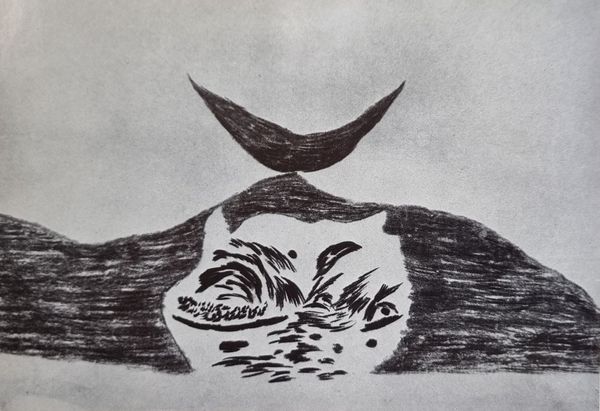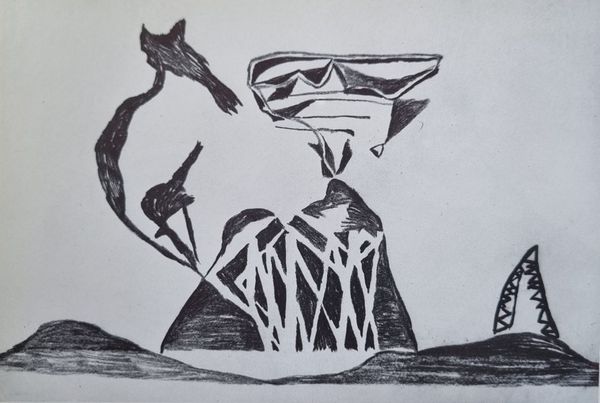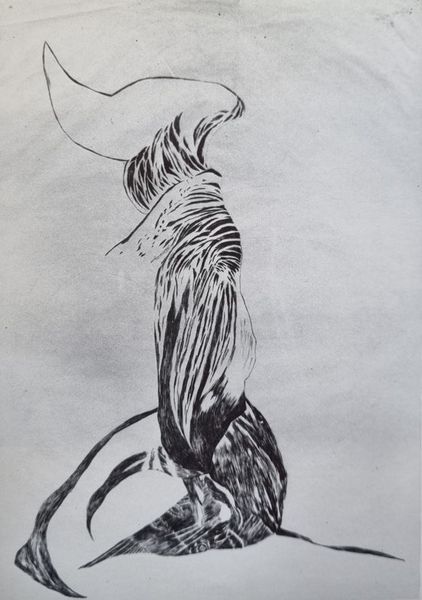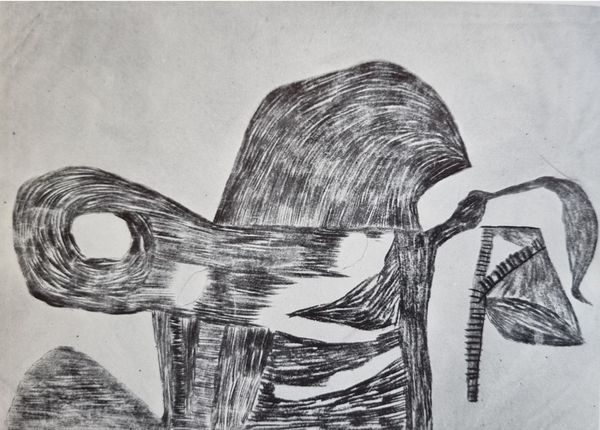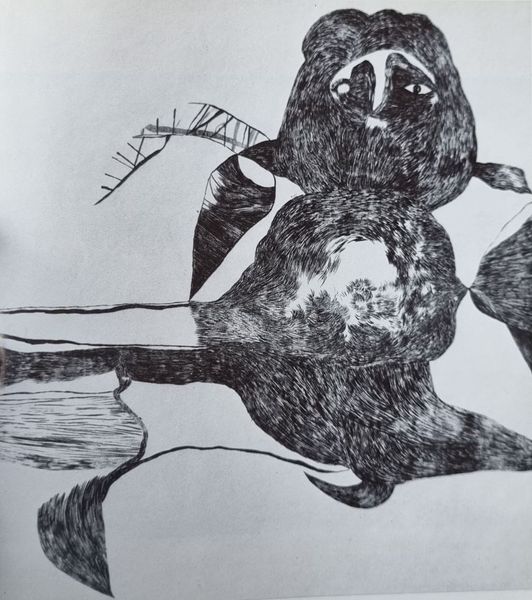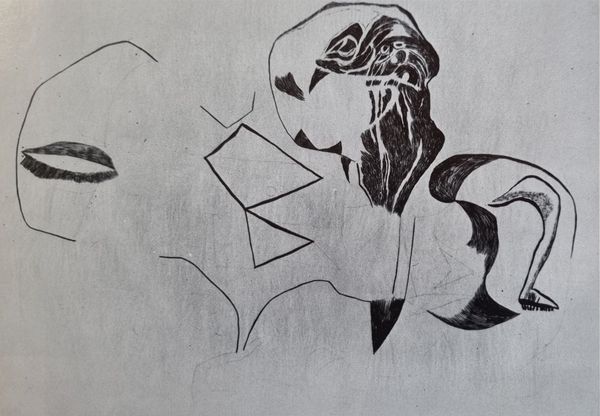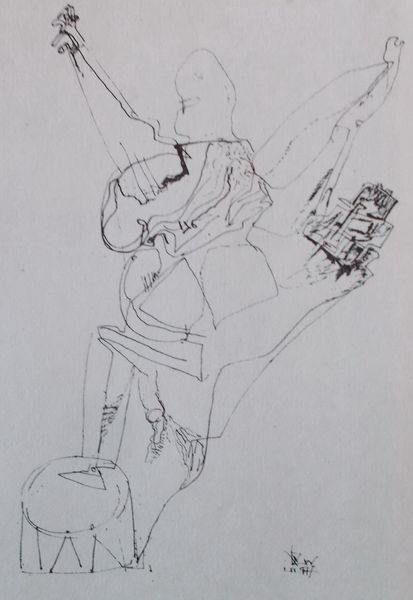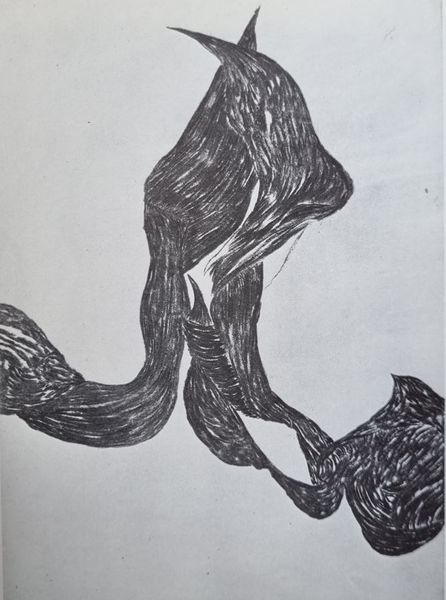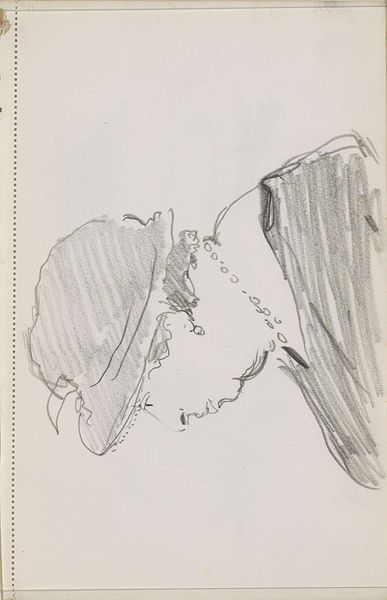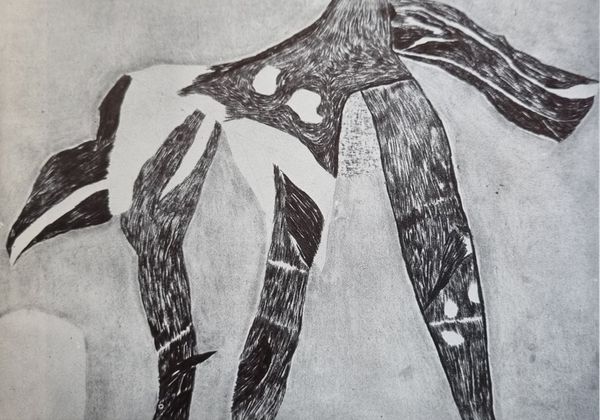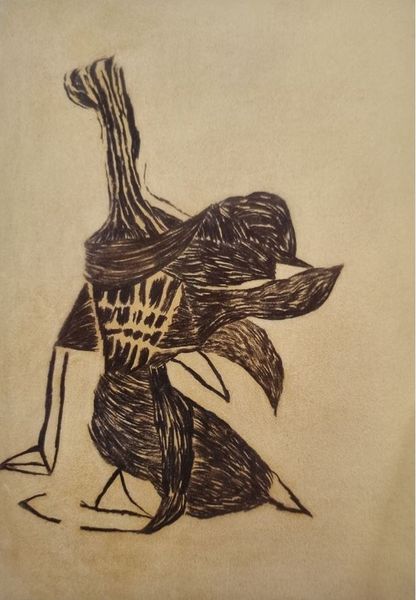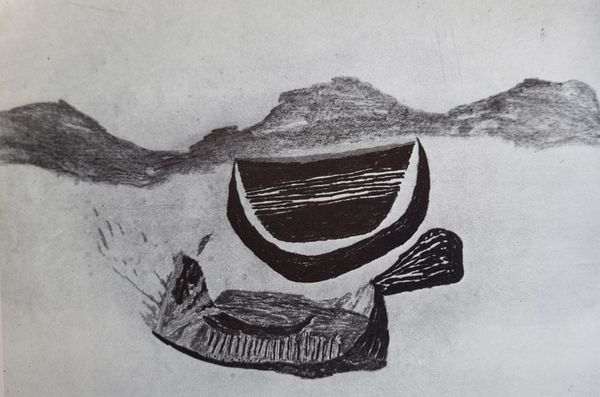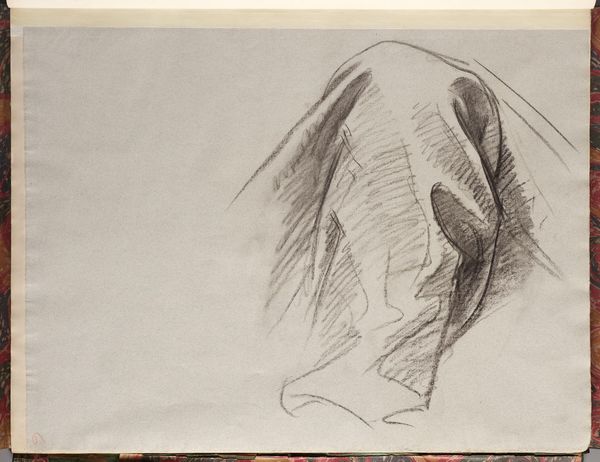
Copyright: Public domain
Vajda Lajos made this pencil drawing, Indiános Állatmaszk, in 1938. The title translates to "Indian Animal Mask," and in it, we see an abstract representation of a face or head adorned with symbolic elements. Consider the historical context of this work; made in Hungary during a time of rising nationalism and political tension, the image pulls from ethnographic sources. It suggests an interest in the "primitive" or "exotic," mirroring trends in early 20th-century European art while revealing a certain alienation from mainstream society. The mask is covered with symbols that perhaps reference cultural artifacts or spiritual emblems. The artist may have been interested in critiquing the values of his own society by contrasting them with those of other cultures. To fully understand the drawing, we'd need to look into the artist's biography and the cultural debates of the time. Such inquiries will reveal the complex relationship between art, identity, and social commentary.
Comments
No comments
Be the first to comment and join the conversation on the ultimate creative platform.
